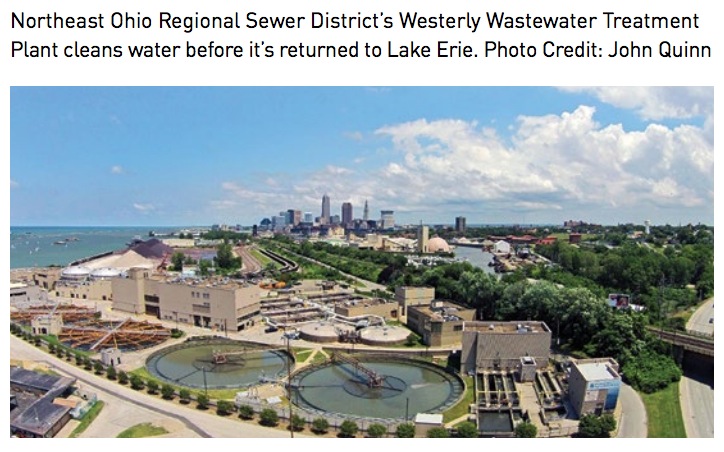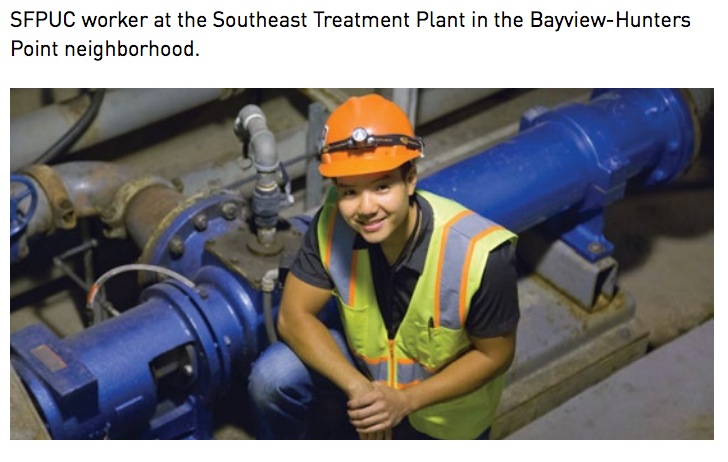VALUE OF WATER COALITION
Water is essential for everything we do. Without it we can’t grow food, clean our clothes, put out fires, produce life-saving medicines, or keep businesses open. After working around the clock for decades, water infrastructure is aging and in need of investment. And as changing climate patterns intensify storms, drought, rising sea levels, and flooding, water systems face stresses that their 20th-century builders never anticipated.
We must make investment in water infrastructure a top priority. Rebuilding and modernizing massive water systems offer a once-in-a-lifetime opportunity to chart a sustainable, prosperous course for the nation. Around the country, water agencies, business leaders, and communities are meeting the challenge and implementing ingenious and creative solutions. Water utilities do more than provide an essential 24/7 service—they also serve as economic anchors, environmental stewards, and good community partners.
This briefing paper, issued by the Value of Water Coalition, spotlights innovative solutions to the nation’s growing water challenges. Through capital investments, technological innovations, creative financing tools, and cross-sector partnerships, water leaders are building stronger communities and a stronger America.
Building a “Green City by a Blue Lake”
Cleveland, Ohio
 Lake Erie and its tributaries are a signature asset in Greater Cleveland, driving economic growth and shaping the identity of the region. The 1969 fire of the Cuyahoga River shocked the nation, and though it was only one of 13 times the river caught fire, it brought into bold relief the threat to water supplies and the urgent need for clean water investments. Since then, the Cleveland region has made remarkable progress toward building a green city by a blue lake. It’s an inspiring lesson in how investments in wastewater infrastructure can restore, conserve, and protect even the most fragile waterways, and in so doing enhance the natural environment, the local economy, and community vitality.
Lake Erie and its tributaries are a signature asset in Greater Cleveland, driving economic growth and shaping the identity of the region. The 1969 fire of the Cuyahoga River shocked the nation, and though it was only one of 13 times the river caught fire, it brought into bold relief the threat to water supplies and the urgent need for clean water investments. Since then, the Cleveland region has made remarkable progress toward building a green city by a blue lake. It’s an inspiring lesson in how investments in wastewater infrastructure can restore, conserve, and protect even the most fragile waterways, and in so doing enhance the natural environment, the local economy, and community vitality.
Central to the region’s clean water transformation is the Northeast Ohio Regional Sewer District, established in 1972. The District oversees Project Clean Lake, which is making strides towards reducing the amount of polluted water discharged into Lake Erie—the source of drinking water for 1.4 million Ohioans. The $3 billion initiative includes construction of large-scale tunnels, treatment-plant improvements, and green infrastructure projects through 2035 to reduce overflows from aging sewer systems. The District’s operations and capital plan investments overall will contribute an estimated $6 billion to the region over the next decade, supporting nearly 4,000 jobs.
The District has forged partnerships with neighborhood, business, and government leaders to make sure its capital investments deliver economic and social dividends to the communities it serves. For example, the District has worked with local governments in its service area to transform vacant lots into green infrastructure projects. This revitalizes distressed properties while managing stormwater to help reduce sewer overflows. Green infrastructure projects like this have the potential to create more than $23 million in economic activity and more than 200 jobs.
It’s fitting that Cleveland Mayor Frank Jackson has made 2015 the Year of Clean Water. Thanks to the prudent clean water investments spearheaded by the Northeast Ohio Regional Sewer District and environmental partners, the region is celebrating and reaffirming its commitment to their valuable waterways.
“Water is such a valuable environmental and economic resource for our city, and we look forward to making great progress in 2015.” —Frank Jackson, Mayor of Cleveland
Being a Good Neighbor
San Francisco Public Utilities Commission
 San Francisco is a tale of two cities. Vast numbers of people and businesses are moving in, driving stunning economic growth and prosperity. The highest-earning households had incomes of at least $423,000 in 2013, higher by far than in any other big city in the U.S. At the same time, San Francisco has the nation’s second largest income gap (after Atlanta) between the wealthy and the poor.
San Francisco is a tale of two cities. Vast numbers of people and businesses are moving in, driving stunning economic growth and prosperity. The highest-earning households had incomes of at least $423,000 in 2013, higher by far than in any other big city in the U.S. At the same time, San Francisco has the nation’s second largest income gap (after Atlanta) between the wealthy and the poor.
It’s a tale of two cities in another way. A world-class metropolis, ground zero for the tech economy, sits atop brick sewers that date back to the Gold Rush.
- Revitalize low-income neighborhoods such as Bayview-Hunters Point;
- Advance urban agriculture and sustainable land use by partnering with community organizations to remove, and green up, 13,000 square feet of concrete sidewalks, and construct three urban agriculture sites; and
- Work with teachers in the school district to educate 27,000 students who are the next generation of environmental stewards.
- The agency’s $4.6 billion upgrade of the water system incorporated one of the largest project labor agreements in the country. It held construction projects over $5 million to prevailing wages and local workforce and apprenticeship goals. Additionally, the agency has opened contracting opportunities to a broader group of local businesses by debundling contracts and establishing a Contractors Assistance Center, which provides local and small businesses with tools, resources, and technical assistance to compete for, and perform on, SFPUC contracts.
As the agency begins a 20-year, multibillion-dollar sewer upgrade, it is committed to building on this success. A priority for the sewer capital program is rebuilding the largest wastewater treatment plant, in the heart of the low-income Bayview-Hunters Point neighborhood. As part of the rebuild, the SFPUC is engaging community partners to make physical and programmatic improvements in the facility and develop a thriving community center.
The SFPUC also strives to leverage partnerships with private-sector firms to embed community benefits commitments into professional service and procurement contracts over $5 million. To date, these efforts have leveraged $6 million in financial contributions and volunteer hours to local schools.
“With its visionary approach, the SFPUC is strengthening our communities while building infrastructure that will serve generations to come. This is a great model and will leave a strong legacy.” —Fred Blackwell, CEO, San Francisco Foundation
Download full version (PDF): The New Wave of Water Innovation
About the Value of Water Coalition
thevalueofwater.org
The Value of Water Coalition is made up local and national leaders who have come together at a time when our water infrastructure is at risk. We are united in elevating the importance of water to the economic, environmental and social well-being of America.
Tags: CA, California, Cleveland, OH, Ohio, San Francisco






 RSS Feed
RSS Feed